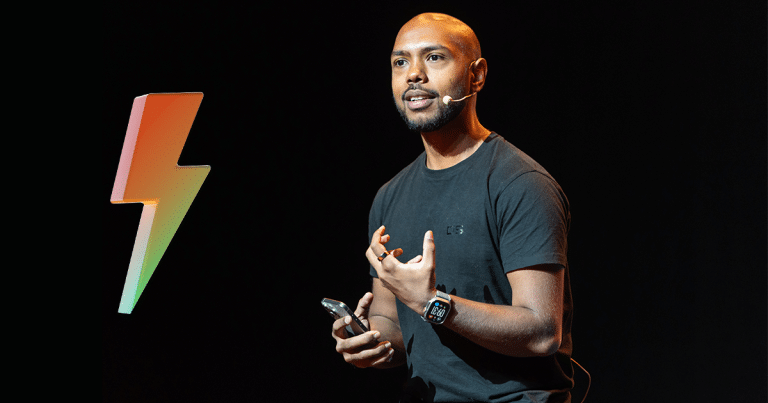Stop Babysitting Your AI – It Plans, Decides, and Acts on Its Own

Using a simple travel planning example, Gift Egwuenu (Senior Developer Advocate at Cloudflare) compared a basic system that just suggests flights with an agent that actually takes charge – finding the best options, booking hotels, and even sending out confirmations.
As she explained, what makes AI agents so powerful is their mix of context, memory, and autonomy.
They don’t just respond to what you tell them – they understand your goals, connect different tools, make smart choices, and keep everything running smoothly in the background.
Three key technical challenges
The first is identity – determining who is making a request and verifying it.
The agent must have a secure method for authentication and authorization when accessing external services, such as travel APIs. Providers like Google Authenticator and Auth0 were used in the demonstration to connect the agent with user sign-in systems and allow access to specific data and functions.
Traditional LLMs do not retain previous interactions, whereas agents require a mechanism for persistent state. This problem is solved through durable objects – a distributed, fast database that preserves the context of each session.
This enables agents to continue conversations or tasks even after the process has been temporarily paused.
The third challenge is coordination, or managing processes and resources. In practical examples, agents use an architecture where servers can automatically “sleep” when inactive, optimizing performance and cost. When needed again, the process restarts, and the agent continues from its previous state.
MCP and the Agent SDK make integrations simple
Gift’s lecture moved to practical aspects, explaining a typical agent architecture. The process begins with user instructions via chat or voice. This is followed by request interpretation, workflow creation, and integration with external services.
The Model Context Protocol (MCP) was introduced as a standard for connecting AI agents to other systems, APIs, and tools. MCP servers are built using the Agent SDK, which provides all key components: state management, real-time connections, and integration with React applications.
Every MCP server keeps its own state and supports durable objects, so storing and syncing data is a breeze. With the Agent SDK, authentication and authorization across different identity providers are built right in.
Egwuenu showed the audience how, with just a few lines of code, an MCP server can securely connect to an external service – making complex integrations look effortless.
AI Agents that act independently but keep you in control
The second part of her lecture demonstrated an AI agent that automatically plans and books trips.
The agent uses an MCP server to connect to flight and hotel APIs. The user inputs departure and destination cities, travel dates, and budget, while the agent autonomously retrieves data, calculates options, and proposes the best routes.
A key component in this example is a workflow that includes human approval points, such as before final booking.
This ensures a balance between automation and control, which is especially important for agents making decisions with real-world consequences, such as financial transactions.
Gift also demonstrated how the agent uses a scheduler, which allows it to set and execute reminders (e.g., “remind me about lunch in 20 seconds”) and retain them even after a session is closed, thanks to synchronized state management.

AI Agents power workflows and interactions
AI agents are not isolated systems. The Agent SDK allows integration into existing frontend applications, particularly React, where agents can function as conversational assistants within the web interface. All interactions, chat, workflow, and result display are visualized in the application, while the agent communicates in the background with the LLM, MCP server, and external APIs.
Agents can leverage different models and services depending on the task – from simple prompts to complex orchestrations combining multiple data sources and tools.
Agents are no longer just a concept but a practical tool
The lecture closed with the Gift’s exciting insight: AI agents are the next big leap in the AI universe. If generative models were your creative sidekick, churning out content and code on demand, AI agents are more like autonomous superheroes – planning, acting, and learning from the world around them all on their own.
For developers, the key value lies in the fact that agents are no longer just a concept but a practical tool. Thanks to standards like MCP and tools like the Agent SDK, it is possible to build an agent that integrates APIs quickly, remembers state, and responds to real user needs.
In the end, Gift concluded, “Agents are not just the future of interfaces – they are a new layer of application logic.”
Want to know what else was discussed at Infobip Shift at Zadar in 2025? Find out here!




